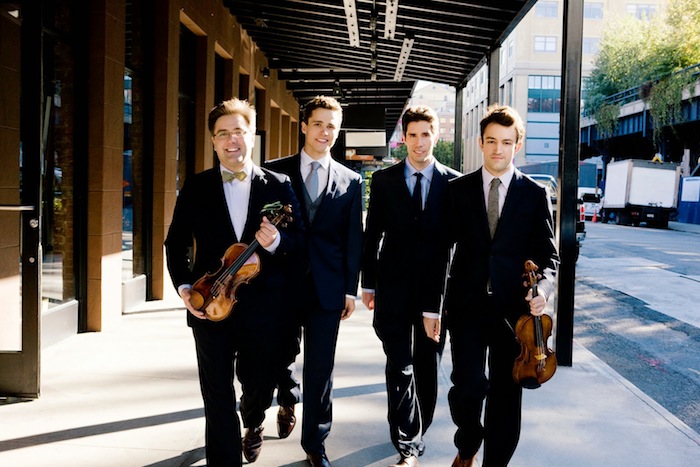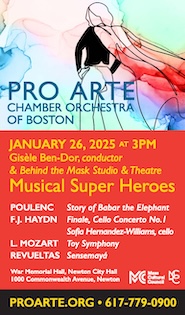Escher Quartet makes a worthy Celebrity Series debut
The Celebrity Series has hosted a number of string quartets in recent seasons. Joining a fine lineup that has included the Emerson, Juilliard, and Danish Quartets is the Escher String Quartet, which made its Celebrity Series debut at Pickman Hall Wednesday night.
Formed in 2005, the ensemble has in its twelve-year existence risen to international heights. Mentored by the Emerson Quartet, the Eschers bear much of that venerable ensemble’s style. Textures are varied and colorful, aggressive passages have a sharp edge to the sound, and, most importantly, the musicians play together with a smooth, uniform blend. Indeed the members of the Escher Quartet live up their name, for the Dutch artist M.C. Escher’s work was known for its seamless weaving of independent parts.
The quartet’s interpretations of works by Beethoven, Webern, and Debussy, all played with polished technique, had intensity, direction, and dimension.
The opener, Beethoven’s String Quartet in E-flat major, Op. 127, was a study in drama and momentum. Completed in 1825 at a time when Beethoven suffered from total deafness, the work stretched the limits of the quartet form. Bold chords introduce and interrupt dance-like themes in the first movement, and the Scherzo and finale contain bristly accents that seem to look ahead to Bartók. The second movement is a set of variations on a slowly turning theme.
The Escher Quartet found the warmth and introspection of that movement, the players shading the music with a gentle ebb and flow to the tempo. Violinist Adam Barnett-Hart traded soft lyrical lines with cellist Brook Speltz to create textures of soft radiance. The musicians brought a wide range of color to the outer movements and dug in for the aggressive accents that pepper the music. Slow themes in the finale sounded with flute-like grace, and the foursome played the quick passages with bucolic verve. The chords of the first movement, shaped broadly, sounded with a rich, tone, while the Scherzo was brisk and athletic, its driving accents seeming to come out of nowhere.
The most colorful playing came in the quartet’s performance of Webern’s Five Pieces for String Quartet, Op. 5. Lasting only twelve minutes when played in full, these pieces involve an ear-tickling palette of sounds, from dusky passages to glistening pizzicatos and towering beams of harmony. Pierre Lapointe’s coolly distant viola line was the highlight of the second piece in the set. In the fourth piece, lines swelled and faded away like mist. Soft utterances in the third exploded into a furious array of fiddling.
The Escher Quartet played the work with energy and conviction. But missing from this performance was the wide expressive markings that are so integral to Webern’s music. His motivic style, when played well, retains a singing quality—compressed romanticism at its finest.
Those deficiencies were remedied in Debussy’s String Quartet in G minor, which closed the program. This work from 1893 shows a composer exploring nontraditional harmonies in ways that would come to define his later impressionistic music.
The Escher Quartet played the work with a searching musicality. Phrases in the first movement soared with the recurring principal theme releasing the tension in the music. In the central section of the fourth movement, the musicians crafted a long line through a sturdy accelerando, the music coming to rest on a chord that crashed like a wave. The pizzicato statements of the second movement had energy and precision. The third movement was warmly lyrical and expressive, with the tone of the four players meshing for a silvery conclusion in a true conversation among friends.
The next event sponsored by the Celebrity Series will feature the vocal group Roomful of Teeth and the string ensemble A Far Cry in music by Hearne, Josquin, Shaw, and others 8 p.m. Friday at Sanders Theatre. celebrityseries.org; 617- 482-6661
Posted in Performances



